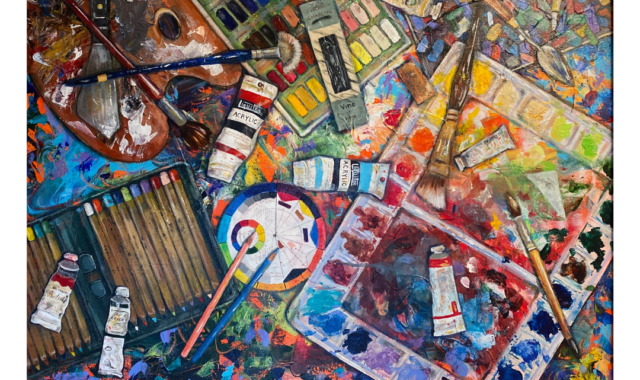An artist statement is a description of your art — what it is and why you make it. But it’s much more than this. Your statement plays an important role in a person’s experience when viewing your art. Essentially, it adds to the value of your art by sharing the stories behind it.
If you’re exhibiting your art, applying for residencies or grants, or even displaying your work online, you’ll want to have an artist statement. Here are some tips to help you craft an interesting artist statement that will showcase both your art and you as the artist.
Tips for Writing an Artist Statement
- Keep it brief — Provide just enough to guide the viewer and to help them make a connection with your art, but let them make their own observations. Ideally, your artist statement should be one-to-two paragraphs and no more than three.
- Make it personal — Write from your soul. Avoid jargon, and say something that can’t be said by another artist. Share why your art is original and put your personal spin on it.
- Tell a story — Help viewers get to know you by sharing your unique story with the world. Why do you create your art? Share what sets you apart from other artists.
- Be specific — The more detailed you can be, the more memorable your statement will be. Avoid abstractions, and get specific. Your artist statement speaks to your art when you are not there to do so yourself.
- Consider your audience — You may end up with several versions of your artist statement for different audiences. For example, what you write when preparing for a show may be different from what you write when applying for a grant.
- Get feedback — Once you write your statement, ask friends and family for feedback. See if they may have a different perspective for you to consider. Use their feedback to enhance what you’ve written.
Process for Writing an Artist Statement
Though your art may flow, writing your artist statement may not. It’s hard to capture all that your art is into words! But keep in mind that your artist statement can evolve, just as you do as an artist. Here’s a process to get you started.
Brainstorm
Instead of trying to immediately jump into writing your artist statement, take some time to consider what you think it should include. It may help to write down some adjectives to describe your work. Also, here are some helpful questions to consider:
- How do you want people to feel when they view your art?
- What do people say they feel when they view your art?
- How do you describe your art to your friends and family?
If it helps, consider another artist’s work and think of ways you would describe it. Sometimes trying to write about work that is less personal to you can help to get your creative juices flowing.
Craft Your Statement
Take the scramble of words that you wrote in your brainstorming exercise and review them. Choose what you feel are the best words to describe your art. Then, start to write your statement, making sure it addresses the medium you work in and why you create what you do. The “why” will include your influences. If you have a unique or particularly interesting process, you may want to include that as well.
Now’s the time to get really creative with your artist statement. Once you complete it, consider ways to enhance the experience of reading it. For example, you may want to add a voice recording of yourself describing your art or sharing a story related to it. Hearing your voice can help to make an unforgettable personal connection. It’s easy to create a recording and feature it next to images of your art using Thingealogy. Simply record yourself and save the file along with pictures of your artwork in one of your Thingealogy Collections.
That’s it! Voila! You have your artist statement. And remember, this is a “living” piece that you can change as you grow and evolve as an artist. If you receive some new inspiration, capture it in your artist statement.
Your artist statement helps art-lovers build a deeper connection with you. Think of it as a welcome guide to your work that tells your story. Knowing how to craft an artist statement that captures the essence of your work is a skill that will serve you now and in the future.
Thingealogy® is a free app that helps you organize your things and the stories behind them. Download the app, and try it out for yourself!

